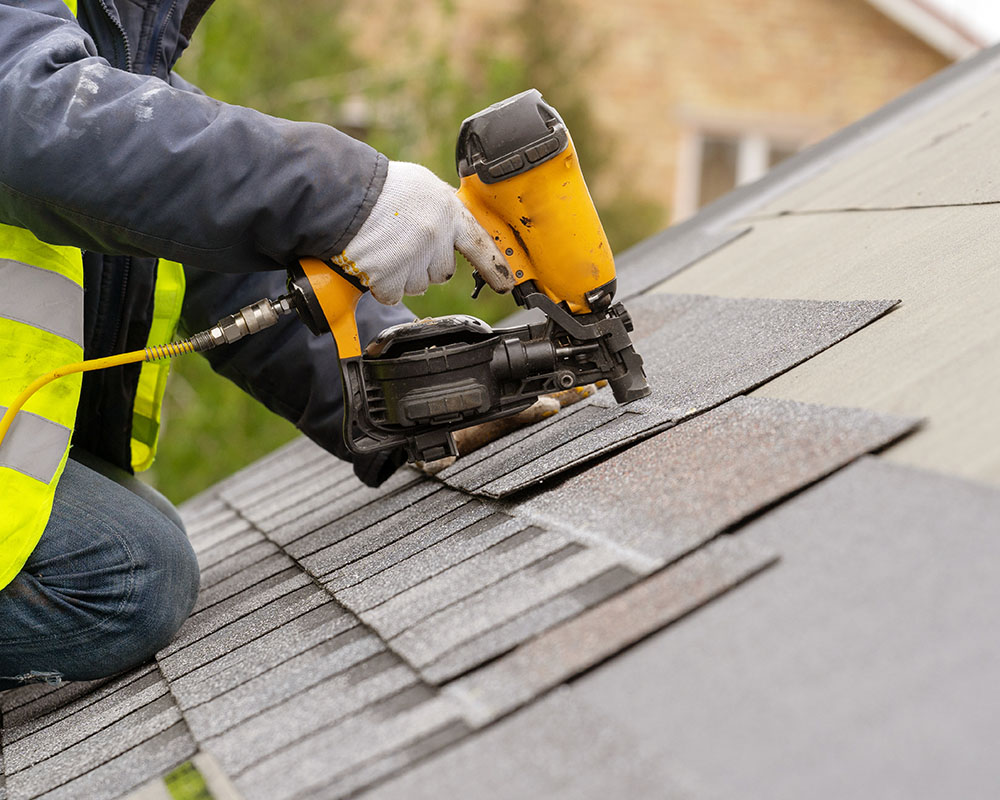Everything You Need To Know About Roof Flashing Failure

Roof flashing is vital in safeguarding your Portland, Oregon, home from potential water damage, making it a crucial component of your roofing system. The repercussions of flashing failure can lead to costly repairs or even necessitate a complete roof replacement. Understanding the fundamentals of roof flashing, recognizing common causes of failure, being aware of warning signs, and adopting preventive measures are essential in ensuring your home remains protected.
Roof flashing is a material strategically placed on vulnerable areas of a roof, such as valleys, chimneys, or walls, where two roofing sections meet. Its primary function is redirecting water away from these susceptible points, preventing water leakage and preserving the roof’s integrity.
Various types of roof flashing serve distinct purposes:
- Step-type or counter-flashing: This type wraps around the base of a wall or chimney.
- Metal strips for skylights: Designed to protect the areas around skylights.
- Roll valley: Positioned along valleys between intersecting roofs.
- Kickout diverter: Installed at the window sill edge.
- Drip edges: Located along eaves and rake overhangs near gable ends.
- Cricket diversion: Placed behind chimneys to channel water away.
Common causes of roof flashing failure
Improper Installation
One of the primary reasons roofs face failure is attributed to inadequate installation practices. When the installation process is not carried out by a seasoned roofing professional using top-notch materials, it can result in compromised sealing. Gaps in the sealant may manifest, creating vulnerable points around essential features such as skylights or chimneys.
These gaps pave the way for water infiltration, causing leaks that can be detrimental to the structural integrity of the roof. The importance of relying on experienced professionals and utilizing high-quality roofing materials during the installation cannot be overstated, as it is a fundamental step in ensuring the long-term resilience of the roofing system.
Substandard Materials
Opting for substandard materials in construction frequently leads to premature failure, especially when subjected to harsh weather conditions. The compromised quality of these materials diminishes the overall resilience and durability of the structure, making it susceptible to accelerated wear and tear under the influence of challenging environmental factors.
Incorrect Design
Insufficient slopes or improperly fitted flashing membranes present a risk of water seepage into unintended areas, surpassing the initially anticipated problems. This compromise in the structural integrity can lead to extensive damage, including rot, mold growth, and potential structural issues. Addressing these issues promptly through professional intervention is crucial to prevent escalating and costly consequences.
Signs of roof flashing failure
Leaks
The most unmistakable indication of flashing failure becomes evident with the occurrence of leaks in areas where flashing plays a crucial role, such as around skylights or chimneys. The manifestation of water dripping from these specific regions is a clear and immediate signal that the flashing is no longer effectively preventing water infiltration.
In the presence of such leaks, it becomes imperative to take swift action to address the issue. Prompt replacement or repair of the compromised flashing is essential to restore the integrity of the roofing system and prevent further water damage, ensuring the continued protection of the structure beneath.
Visible Damage
The visible damage, such as cracks or rust on the flashing, clearly indicates vulnerable points that allow water entry, signaling potential issues with the roofing system. These visible signs should not be overlooked, as they can lead to more significant problems if left unaddressed.
Prompt attention to such damage is essential to prevent water infiltration and subsequent damage to the roof’s structural integrity. Regular inspections and timely repairs are crucial in maintaining the effectiveness of the flashing and ensuring the overall health and longevity of the roofing system.
Mold or Mildew Growth
The repercussions of faulty flashings extend to the growth of mold and mildew, as they contribute to the accumulation of moisture on ceilings or walls near the affected areas. This not only compromises the aesthetics of the space but also poses a threat to indoor air quality.
Mold and mildew growth can adversely affect health and well-being, making addressing the root cause—damaged or inadequate flashings imperative. Timely intervention through repairs or replacements is essential to mitigate the spread of mold, preserve the visual appeal of the interior, and maintain a healthy living environment within the property.
Shingle Damage
When faulty flashing is present, it can induce shingle damage, causing the affected area to curl up due to excess moisture. This detracts from the roof’s visual appeal and undermines the insulation effectiveness of the entire roofing system. Curled shingles are unsightly and can compromise the roof’s structural integrity, making it susceptible to further damage.
Addressing the issue promptly through necessary repairs or replacements is crucial to maintaining the roof’s overall aesthetic and functional integrity, ensuring optimal performance and longevity.

For homeowners in need of roof repair or replacement in Portland, Oregon, or nearby areas, Cascade Roofing offers expertise and assistance. Our team of experienced professionals guides you in selecting the best roof flashing for your home and ensures correct installation to avert future issues.
Contact us to schedule an appointment and fortify your home against potential roof flashing issues. Cascade Roofing is your trusted partner in maintaining a secure and resilient roofing system.
